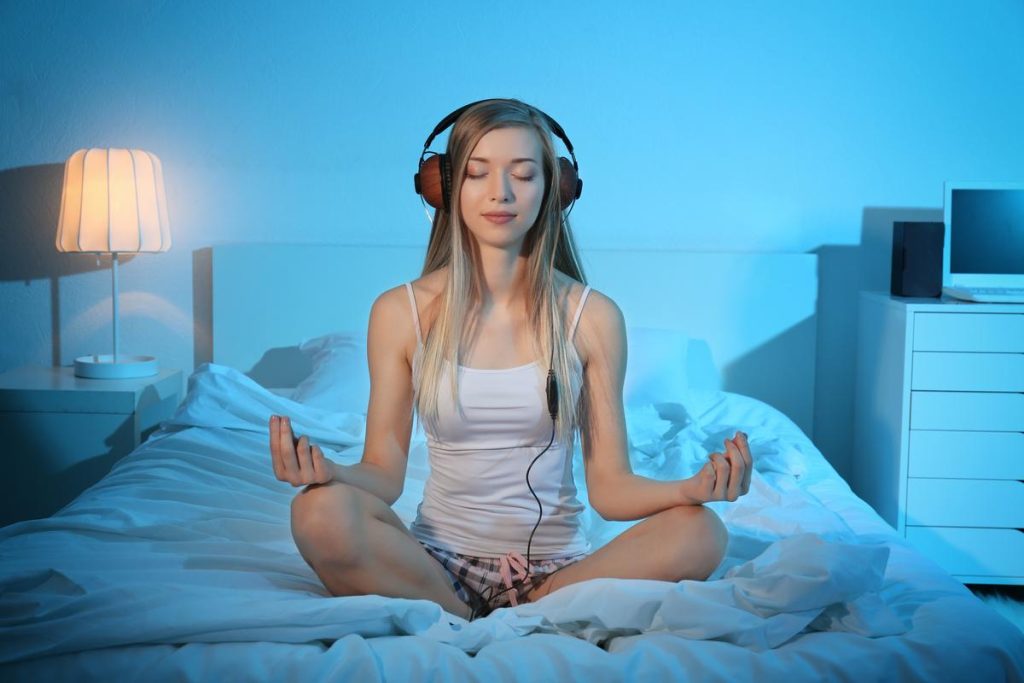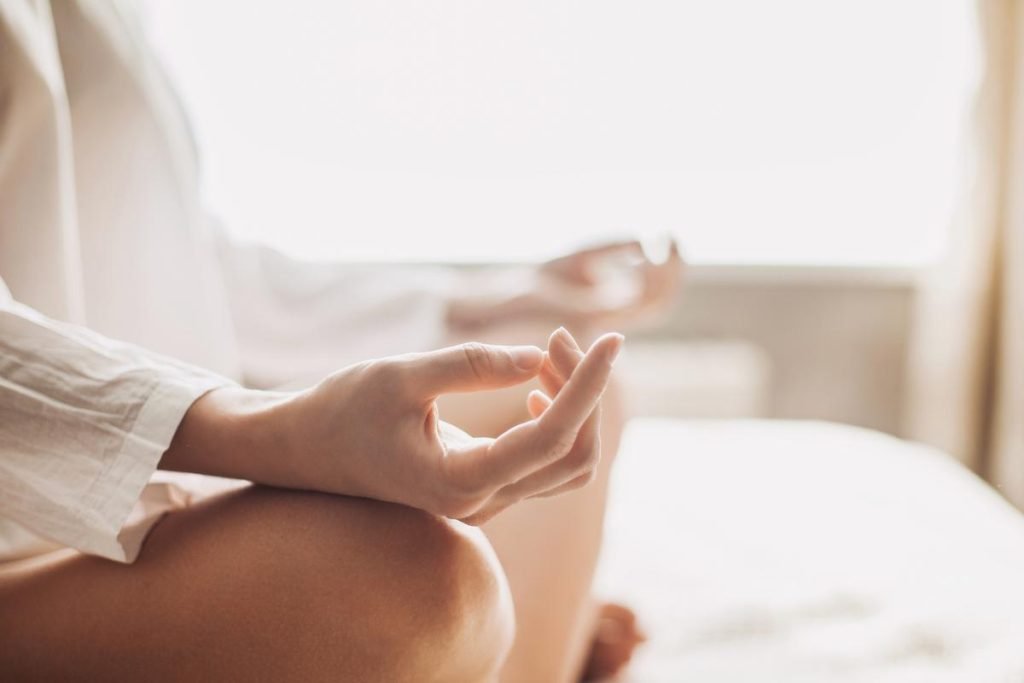Table of Contents
Introduction
Sleep meditation, which combines meditation and mindfulness practices, has grown in favour as an effective method for promoting relaxation and improving sleep quality. Finding relaxation and getting a good night’s sleep can be difficult in today’s fast-paced society, where stress and anxiety frequently rule our lives. In this detailed article, we will look at five sleep meditation techniques that can help you attain rapid relaxation and get a good night’s sleep. These techniques are based on tried-and-true meditation and mindfulness practices that help improve your sleep and overall well-being.
Understanding the Value of Sleep
Before diving into the sleep meditation methods, it’s critical to understand the importance of sleep in our lives. Sleep is more than just a state of relaxation; it is a key moment during which our bodies and minds go through necessary procedures for optimal functioning. Physical repair, memory consolidation, and emotional regulation are examples of these processes. Our cognitive ability, mood, and overall health can deteriorate if we do not get enough sleep.
Furthermore, tension and anxiety frequently interfere with our ability to fall and stay asleep. This is where sleep meditation comes into play as a powerful therapy for combating sleep disorders. Sleep meditation, by soothing the mind and relaxing the body, can help you transition from wakefulness to slumber and enjoy more restorative sleep.
Top 5 Sleep Meditation Hacks

1. Mindful Breathing and Deep Breathing
Sleep meditation relies heavily on deep breathing and attention. They help to relax the mind, soothe the neurological system, and relieve tension. Here’s how to put these practices together for effective sleep meditation:
- Find a Relaxed Position: Lie down on your back in a relaxed position, arms at your sides, and legs outstretched. If it’s more comfortable for you, close your eyes.
- Focus on Your Breath: Take a few deep breaths to relax. Then, return your focus to your breathing. As you inhale and exhale, notice the natural rhythm of your breath. Take note of how your breath enters and exits your nostrils, as well as the rise and fall of your chest and abdomen.
- Count Your Breaths: Count your breaths to help you focus your attention. Inhale silently and count “one,” then exhale silently and count “two.” Continue counting up to ten breaths before beginning again. If your thoughts wander, gently bring them back to your breathing and counting.
- Let Go of Thoughts: Thoughts are normal during meditation. Rather of confronting them, acknowledge them and let them drift away like clouds in the sky. Redirect your attention to your breathing and counting.
- Progressive Muscle Relaxation: As you relax, you can add progressive muscle relaxation into your routine by intentionally tensing and then releasing each muscle group in your body. Begin with your toes and progress to your head.
Deep breathing and mindfulness meditation can be a powerful tool for quieting the mind, reducing stress, and preparing your body for restorative sleep.
2. Guided Sleep Meditations
If you struggle to focus during meditation or prefer a more structured method, guided sleep meditations can be extremely beneficial. Guided meditations are taught by qualified meditation instructors who provide instructions and soothing assistance throughout the session via audio recordings or apps. Here’s how to begin using guided sleep meditations:
- Locate a Guided Meditation Resource: Look for guided sleep meditations on the internet or in meditation applications. There are several alternatives available, ranging from brief sessions to longer sessions aimed at addressing specific sleep difficulties.
- Select a Convenient Position: As with traditional meditation, find a comfortable position in your bed. You can use headphones or a speaker to listen to guided meditations.
- Listen to the Meditation Guide: Allow the voice of the meditation guide to take you through relaxation exercises, deep breathing, and visualizations. These guided sessions are intended to help you let go of stress and anxiety, making it easier to fall asleep.
- Be Consistent: Make guided sleep meditation a regular part of your night time routine to reap the full advantages. Consistency can assist in conditioning your body and mind to associate the practice with sleep.
Guided sleep meditations are especially beneficial for people who are new to meditation or who want a more structured approach to relaxation.

3. Meditation Using Body Scan
Body scan meditation is a practice that involves scanning your body from head to toe, paying attention to and releasing any areas of tension or discomfort. It is an effective relaxation and self-awareness practice. This is how to do a scan of your body during meditating:
- Find a Comfortable Position: Begin by lying down in a comfortable position, either on your back or in a relaxed posture, as with other meditation practices.
- Start at the Top: Close your eyes and focus your attention on the top of your head. Consider any sensations or tension in this area for a moment. If you feel any tension, imagine it dissolving with each inhalation.
- Move Downward: Shift your focus down your body, one body component at a time. From your brow to your neck, shoulders, arms, chest, abdomen, hips, thighs, knees, calves, and finally your feet, pay particular attention to each area.
- Release Tension: Whenever you feel tension or discomfort, concentrate your breath and concentration on that place, envisioning the tension disappearing with each exhalation.
- Finish the Scan: After scanning your entire body, take a few moments to relax and enjoy the sensation of your body being free of tension.
- Drift to Sleep: Because your body and mind are completely relaxed at this stage, you may find it easy to fall asleep.
Body scan meditation is a fantastic approach for relieving physical tension and increasing calm, making it a perfect practice for preparing your body for comfortable sleep.
4. Visualization Methods
Visualization is a powerful strategy that can assist to calm the mind and induce relaxation. Here are some ideas for incorporating visualization into your sleep meditation practice:
- Find a Convenient Position: Begin by lying down in a comfortable position with your eyes closed.
- Select a Relaxing Scene: Imagine yourself in a peaceful and calming place, such as a beach, forest, or meadow. Consider yourself in this quiet atmosphere, surrounded by beauty and peace.
- Use Your Senses: Use your senses to make the visualization more vivid. Take note of the environment’s shades, forms, and features. Feel the sun’s warmth or a gentle wind on your skin. Listen to nature’s sounds, such as rustling leaves or the soft lapping of waves.
- Let Go of Tension: As you relax into this peaceful visualization, let go of any tension or worries. Allow the tranquil scene to wash over you, providing a deep sense of relaxation.
- Stay in the Moment: Within your visualization, concentrate on the present moment. Let go of ideas about the past or the future and totally accept the calm and serenity you’ve established in your mind.
Visualization techniques can be tailored to your preferences and can take you to a peaceful location, assisting you in preparing for a comfortable night’s sleep.
5. Mantra and Breathing
Incorporating certain breathing patterns and mantras (repeated words or phrases) into your sleep meditation will help you relax even more and ease into sleep. Here’s how to employ these strategies:
- Find a Comfortable Position: Lie down and close your eyes in a comfortable position.
- Select a Breathing Pattern: Choose a basic breathing pattern, such as the 4-7-8 technique, in which you inhale for four counts, hold your breath for seven counts, then exhale for eight counts. This rhythm can cause your heart rate to calm and you to relax.
- Begin with a Mantra: Choose a relaxing word or phrase that speaks to you, such as “peace,” “serenity,” or “relax.” Repeat your mantra silently while you inhale and exhale according to your preferred breathing pattern.
- Concentrate on the Breath and Mantra: Concentrate on your breath and mantra, synchronizing them as you inhale and exhale. This dual focus can help to calm the mind and produce a sensation of calm.
- Drift to Sleep: Continue the practice, allowing the rhythmic breathing and mantra repetition to bring you into deep relaxation and, finally, sleep.
These breathing and mantra practices can help you relax your mind, reduce tension, and prepare your body for deep sleep.

Conclusion
In our fast-paced lifestyles, many of us strive for rapid relaxation and improved sleep quality. Sleep meditation is a valuable and easily available remedy to this widespread problem. You can improve your bedtime routine and enjoy the benefits of sound sleep by adding deep breathing and mindfulness, guided sleep meditations, body scan meditation, visualization techniques, and breathing with a mantra.
When it comes to sleep meditation, remember that consistency is everything. It may take some time to thoroughly incorporate these practices into your routine and get the benefits. However, with time and effort, you can turn sleep meditation into a vital technique for obtaining rapid relaxation and getting a good night’s sleep, thereby improving your general well-being and quality of life.